The idea of living in a high-rise condo in downtown Tokyo makes for a nice daydream. Between the high cost of housing and the inescapable hustle and bustle of Japan’s capital, though, when it comes time to actually pick a home, many people decide they’d rather live in one of Japan’s other cities, or one of Tokyo’s suburbs at least.
Underlining this trend are the results of a survey by newly formed magazine Aene which asked Japanese housewives which town they’d be happiest living in. Central Tokyo failed to crack the top 10, although the number-one pick isn’t too far away from the capital.
As part of the survey, Aene created a set of parameters it dubbed Happy Quality, which evaluated the towns based on their family-friendliness, economic factors, food and health conditions, access to entertainment, and overall convenience of daily life.
Perhaps as a result of focusing on the opinions of people who don’t work outside the home, only five of the top 10 were rated as having local economic conditions above the survey average. On the other hand, all of the highest-rated towns performed extremely well in the other four categories, with study participants showing a particular fondness for areas with parks or other natural environments, good schools, and historical significance.
When asked what specifically was indicative of a convenient place to live, the second-most common response was proximity to a train or subway station, which was given by 28.9 percent of the women in the study. Far surpassing this, though, was the 47.8 percent who answered that what they really wanted was a large mall, supermarket, or shopping street.
The reason behind this is a little more complex than just “Women shop a lot,” as shopping is often connected to several of the parameters in Aene’s Happy Quality index. Toshio Noguchi, a professor of marketing at Japan’s prestigious Waseda University, points out that how and when Japanese consumers shop has changed, giving the activity a different role in family dynamics. “Until recently, it was the norm for housewives to do shopping each day at local retailers. Now, though, we’re seeing more families going shopping together at larger centers on the weekend, buying in bulk. Necessary shopping itself has become a form of leisure, and malls are becoming a place where communication within the family happens.”
So, which towns in Japan ranked the highest in the survey? Let’s start with number 10.
10. Hiroshima City (Hiroshima Prefecture)
Respondents were impressed by the kind and friendly attitude of Hiroshima’s citizens. Being the prefectural capital means it’s a developed city, but not nearly as crowded as Tokyo.
9. Nihama (Ehime Prefecture)
The first of two towns on the island of Shikoku to make the list, Nihama offers both job opportunities with local industry and proximity to the Inland Sea and its delicious seafood.
8. Moriya (Ibaraki Prefecture)
Moriya’s Happy Quality was balanced across the five criteria, with special mention given to its modern shopping facilities.
7. Ikoma (Nara Prefecture)
Ikoma is essentially a suburb of Nara City, being just 30 minutes away by train. Its high ranking was due in no small part to its proximity to the many culturally and historically important temples of Japan’s former capital.
6. Fukuoka City (Fukuoka)
One of the most populous cities in the top 10, Fukuoka got a boost from its local food scene which includes delicacies such as spicy cod roe, hot-pot, and pork stock ramen.
5. Matsuyama (Ehime Prefecture)
Back in Ehime again, living in the relatively cozy prefectural capital still provides for a laid-back lifestyle, plus proximity to some of Japan’s best citrus fruit and one of its oldest hot springs, Dogo Onsen.
4. Mitaka City (Tokyo)
Technically still part of Tokyo, Mitaka lies outside the metropolis’ 23 main wards. Easy access to central Tokyo, the lush greenery of Inokashira Park, and the nearby Ghibli Museum all contribute to Mitaka’s elegant and sophisticated vibe.
3. Nishinomiya (Hyogo Prefecture)
Situated between the much larger cities of Kobe and Osaka, Nishinomiya lets residents enjoy the fantastic food of each, including Kobe beef, takoyaki, kushi katsu, and the wonders of Kobe’s Chinatown. It’s also the home of Koshien, Japan’s most storied baseball stadium that hosts both Osaka’s professional team, the Hanshin Tigers, and the country’s twice-annual high school tournament championships. It’s also become a bit of a shopper’s paradise due to its numerous malls.
2. Inagi City (Tokyo)
Lying just outside the 23 wards, Inagi has a shocking amount of greenery if your only image of Tokyo is the Shibuya Scramble intersection. It isn’t limited to parks, either, as the town is also where you’ll find the Otsuka Farm. Life in Inagi isn’t completely bucolic, though, as the town also has its own branches of Costco and Ikea.
1. Fujisawa (Kanagawa Prefecture)
Taking home the top spot is Fujisawa, the coastal city in Kanagawa which includes Enoshima Island. Fujisawa combines the relaxed atmosphere you’d expect from a beach town with extremely convenient public transportation, as a train ride from Enoshima Station to Shinjuku, in the heart of Tokyo, will take you less than 30 minutes. Add in centuries-old temples, colorful local legends about fearsome dragons falling in love with beautiful princesses, and breathtaking sunset views of Mount Fuji, and it’s easy to see why Fujisawa is loved not just by housewives, but by anyone who can appreciate nature, history, or just the relaxing sound of the waves.
Any of these towns take your fancy? Do you have first-hand experience living in any of them? Let us know in the comments!
Sources: Dot, Aene
Insert images: RocketNews24, Wikipedia/Otherde, Ikoma City, Mitaka City

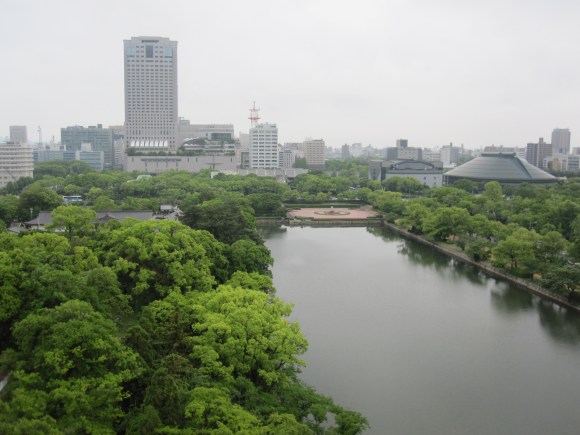
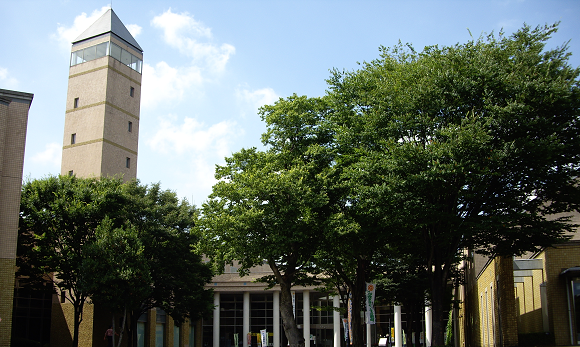
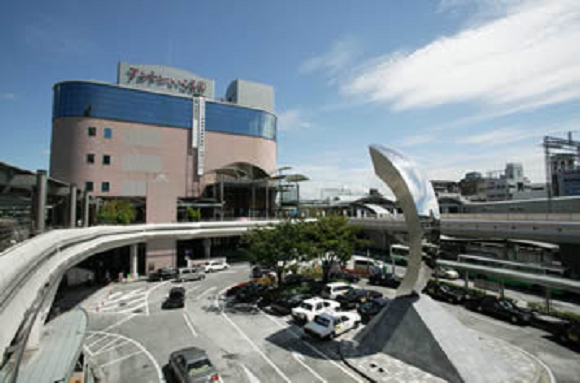
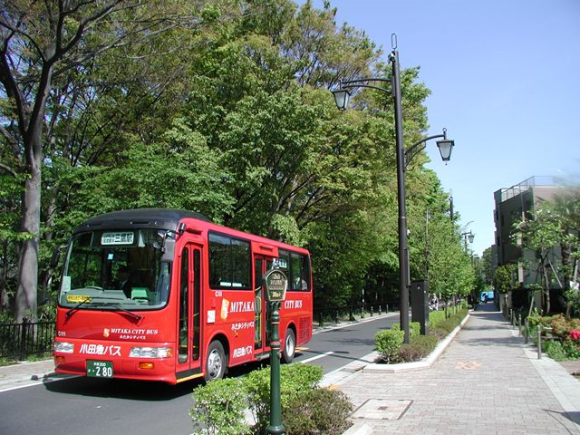
 Moving to Tokyo? Here are the three best, most reasonable neighborhoods to live in
Moving to Tokyo? Here are the three best, most reasonable neighborhoods to live in Character created by Hayao Miyazaki pops up on manhole covers in Ghibli Museum neighbourhood
Character created by Hayao Miyazaki pops up on manhole covers in Ghibli Museum neighbourhood The 10 best places for young, single people to live in and around Tokyo【Survey】
The 10 best places for young, single people to live in and around Tokyo【Survey】 Which Japanese city is gaining interest among families and renters? Hint: it’s not in Tokyo
Which Japanese city is gaining interest among families and renters? Hint: it’s not in Tokyo What’s the best part of Tokyo to live in, and why? Survey gives the top six picks
What’s the best part of Tokyo to live in, and why? Survey gives the top six picks McDonald’s new Happy Meals offer up cute and practical Sanrio lifestyle goods
McDonald’s new Happy Meals offer up cute and practical Sanrio lifestyle goods Starbucks reopens at Shibuya Scramble Crossing with new look and design concept
Starbucks reopens at Shibuya Scramble Crossing with new look and design concept Is the new Shinkansen Train Desk ticket worth it?
Is the new Shinkansen Train Desk ticket worth it? More foreign tourists than ever before in history visited Japan last month
More foreign tourists than ever before in history visited Japan last month Randomly running into a great sushi lunch like this is one of the best things about eating in Tokyo
Randomly running into a great sushi lunch like this is one of the best things about eating in Tokyo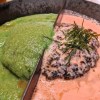 Hamburg and Hamburg Shibuya: A Japanese restaurant you need to put on your Tokyo itinerary
Hamburg and Hamburg Shibuya: A Japanese restaurant you need to put on your Tokyo itinerary Our reporter takes her 71-year-old mother to a visual kei concert for the first time
Our reporter takes her 71-year-old mother to a visual kei concert for the first time Disney princesses get official manga makeovers for Manga Princess Cafe opening in Tokyo
Disney princesses get official manga makeovers for Manga Princess Cafe opening in Tokyo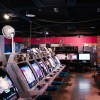 Tokyo’s most famous arcade announces price increase, fans don’t seem to mind at all
Tokyo’s most famous arcade announces price increase, fans don’t seem to mind at all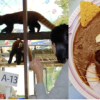 Watch red pandas while you eat red panda curry at Japan’s Safari Land
Watch red pandas while you eat red panda curry at Japan’s Safari Land We try out “Chan Ramen”, an underground type of ramen popular in the ramen community
We try out “Chan Ramen”, an underground type of ramen popular in the ramen community Foreign English teachers in Japan pick their favorite Japanese-language phrases【Survey】
Foreign English teachers in Japan pick their favorite Japanese-language phrases【Survey】 Beautiful new Final Fantasy T-shirt collection on the way from Uniqlo【Photos】
Beautiful new Final Fantasy T-shirt collection on the way from Uniqlo【Photos】 There’s a park inside Japan where you can also see Japan inside the park
There’s a park inside Japan where you can also see Japan inside the park New Studio Ghibli bedding sets are cool in all senses of the word
New Studio Ghibli bedding sets are cool in all senses of the word Japanese convenience store packs a whole bento into an onigiri rice ball
Japanese convenience store packs a whole bento into an onigiri rice ball Hanton rice — a delicious regional food even most Japanese people don’t know about, but more should
Hanton rice — a delicious regional food even most Japanese people don’t know about, but more should New Pokémon cakes let you eat your way through Pikachu and all the Eevee evolutions
New Pokémon cakes let you eat your way through Pikachu and all the Eevee evolutions Studio Ghibli releases Kiki’s Delivery Service chocolate cake pouches in Japan
Studio Ghibli releases Kiki’s Delivery Service chocolate cake pouches in Japan Japan’s bone-breaking and record-breaking roller coaster is permanently shutting down
Japan’s bone-breaking and record-breaking roller coaster is permanently shutting down New definition of “Japanese whiskey” goes into effect to prevent fakes from fooling overseas buyers
New definition of “Japanese whiskey” goes into effect to prevent fakes from fooling overseas buyers Foreign passenger shoves conductor on one of the last full runs for Japan’s Thunderbird train
Foreign passenger shoves conductor on one of the last full runs for Japan’s Thunderbird train Our Japanese reporter visits Costco in the U.S., finds super American and very Japanese things
Our Japanese reporter visits Costco in the U.S., finds super American and very Japanese things Kyoto bans tourists from geisha alleys in Gion, with fines for those who don’t follow rules
Kyoto bans tourists from geisha alleys in Gion, with fines for those who don’t follow rules Studio Ghibli unveils Mother’s Day gift set that captures the love in My Neighbour Totoro
Studio Ghibli unveils Mother’s Day gift set that captures the love in My Neighbour Totoro Domino’s Japan now sells…pizza ears?
Domino’s Japan now sells…pizza ears? New Japanese KitKat flavour stars Sanrio characters, including Hello Kitty
New Japanese KitKat flavour stars Sanrio characters, including Hello Kitty Kyoto creates new for-tourist buses to address overtourism with higher prices, faster rides
Kyoto creates new for-tourist buses to address overtourism with higher prices, faster rides Sales of Japan’s most convenient train ticket/shopping payment cards suspended indefinitely
Sales of Japan’s most convenient train ticket/shopping payment cards suspended indefinitely Sold-out Studio Ghibli desktop humidifiers are back so Totoro can help you through the dry season
Sold-out Studio Ghibli desktop humidifiers are back so Totoro can help you through the dry season Japanese government to make first change to romanization spelling rules since the 1950s
Japanese government to make first change to romanization spelling rules since the 1950s Ghibli founders Toshio Suzuki and Hayao Miyazaki contribute to Japanese whisky Totoro label design
Ghibli founders Toshio Suzuki and Hayao Miyazaki contribute to Japanese whisky Totoro label design Doraemon found buried at sea as scene from 1993 anime becomes real life【Photos】
Doraemon found buried at sea as scene from 1993 anime becomes real life【Photos】 Tokyo’s most famous Starbucks is closed
Tokyo’s most famous Starbucks is closed One Piece characters’ nationalities revealed, but fans have mixed opinions
One Piece characters’ nationalities revealed, but fans have mixed opinions We asked a Uniqlo employee what four things we should buy and their suggestions didn’t disappoint
We asked a Uniqlo employee what four things we should buy and their suggestions didn’t disappoint Princesses, fruits, and blacksmiths: Study reveals the 30 most unusual family names in Japan
Princesses, fruits, and blacksmiths: Study reveals the 30 most unusual family names in Japan Studio Ghibli’s new desktop Howl’s Moving Castle will take your stationery on an adventure
Studio Ghibli’s new desktop Howl’s Moving Castle will take your stationery on an adventure Instant-ramen coated fried chicken appears in Tokyo, instantly makes us hungry, happy【Taste test】
Instant-ramen coated fried chicken appears in Tokyo, instantly makes us hungry, happy【Taste test】 Yokohama ranks as most desirable city for living in Kanto for the second year in a row
Yokohama ranks as most desirable city for living in Kanto for the second year in a row Five of the worst areas to live in and around Tokyo
Five of the worst areas to live in and around Tokyo The top ten most appealing of Tokyo’s 23 special wards to live in after retirement
The top ten most appealing of Tokyo’s 23 special wards to live in after retirement Japanese town that spent 25 million yen in COVID money on giant squid statue says it paid off big
Japanese town that spent 25 million yen in COVID money on giant squid statue says it paid off big Home-hunting in Japan changes as people eye new communities in wake of COVID-19
Home-hunting in Japan changes as people eye new communities in wake of COVID-19 Fujisawa Enoshima Fireworks Festival results in one ton of garbage strewn on the beach
Fujisawa Enoshima Fireworks Festival results in one ton of garbage strewn on the beach Japan’s new manhole cover T-shirts let you show off your local prefectural pride
Japan’s new manhole cover T-shirts let you show off your local prefectural pride New 3D aquarium show to let visitors experience a trip to the deep sea in Enoshima
New 3D aquarium show to let visitors experience a trip to the deep sea in Enoshima Japanese city’s plan to make convenience store restrooms public restrooms stinks, owners think
Japanese city’s plan to make convenience store restrooms public restrooms stinks, owners think Four pieces of important advice for foreigners in Japan moving from the countryside to Tokyo
Four pieces of important advice for foreigners in Japan moving from the countryside to Tokyo Tokyo’s tea taxis will serve you a cold drink while giving you a lift this summer
Tokyo’s tea taxis will serve you a cold drink while giving you a lift this summer Top 10 areas in Japan’s capital region where women who live on their own want to live
Top 10 areas in Japan’s capital region where women who live on their own want to live Survey ranks the most desirable neighborhoods to live in Japan’s Kansai region
Survey ranks the most desirable neighborhoods to live in Japan’s Kansai region Japan’s latest luxury train is a stylish cafe on rails with hundred-year-old craftsmanship
Japan’s latest luxury train is a stylish cafe on rails with hundred-year-old craftsmanship Unsettling softball-playing scarecrows keep Japanese town entertained, creeped out
Unsettling softball-playing scarecrows keep Japanese town entertained, creeped out
Leave a Reply